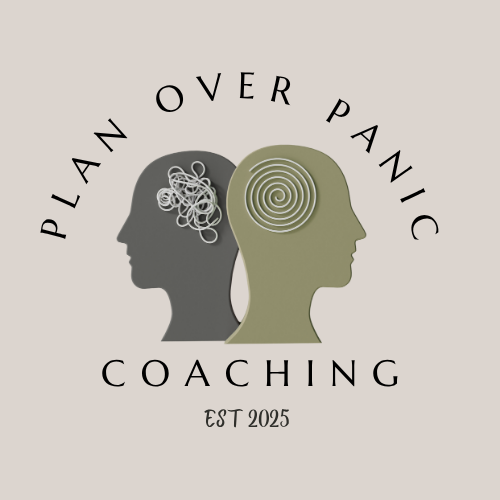Mindset for Beginners: WTF Is It Anyway? (Fixed vs. Growth, Explained)
Let’s be real… “mindset” gets thrown around a lot. Scroll through Instagram and it’s all “just shift your mindset and everything changes.” Cool… but WHAT THE ACTUAL F does that mean?
If you’ve ever rolled your eyes at “think positive!” posts, you’re not alone…I still do. Mindset isn’t about forcing good vibes or pretending everything’s fine when it’s not. It’s about the lens your brain uses to interpret life and knowing you can actually change that lens.
What “Mindset” Actually Means
Your mindset is the collection of beliefs, assumptions, and thought patterns your brain has built over time.
It’s how your brain decides what’s possible for you, how you handle challenges, and whether you bounce back or spiral.
Think of it like your personal operating system. It’s always running in the background, quietly influencing every “app” (aka, thought, choice, or reaction) you open.
And just like your phone, your mindset sometimes needs an update. Except this mindset update doesn’t require a software engineering degree or a teenager on standby to explain what just happened to your freaking screen.
The Two Main Types of Mindset
There are a million shades of mindset out there, but psychologist Carol Dweck boiled it down to two key types:
Fixed Mindset
This one whispers things like:
“I’m just not good at this.”
“That person’s naturally talented—must be nice.”
“If I fail, it means I’m not smart enough.”
A fixed mindset believes your abilities, intelligence, and personality are basically set in stone. You either have it or you don’t.
The result? You avoid challenges, hate feedback, and feel personally attacked by mistakes.
Growth Mindset
This one sounds more like:
“I can learn this—even if it’s slow.”
“Mistakes suck, but they teach me something.”
“I’m not there yet.”
A growth mindset believes you can develop your skills through effort, curiosity, and practice. It doesn’t mean you love failure. It just means you don’t let it define you.
How to Tell Which One You’re Rockin’
Which reaction matches you? It’s one thing you have control over…YOUR reaction!
Situation: You bomb a presentation
Fixed Mindset Reaction: “I’m terrible at public speaking.”
Growth Mindset Reaction: “That didn’t go how I wanted—what can I tweak next time?”
Situation: You see someone crush it at something you want to do
Fixed Mindset Reaction: “They’re just naturally better.”
Growth Mindset Reaction: “I can learn from what they’re doing.”
Situation: You make a mistake at work
Fixed Mindset Reaction: “I’m such an idiot.”
Growth Mindset Reaction: “Okay, what went wrong and how do I prevent it next time?”
Notice your inner “brain voice.” It’s sneaky—but awareness is the first step to changing it.
Why It Matters (Especially If You’re a Beginner)
A growth mindset isn’t just motivational bullshit. Research shows it’s linked to:
✅ Better resilience
✅ More creativity
✅ Higher confidence
✅ Less stress
And most importantly—it helps you start before you feel ready.
Which is the secret to, well, everything.
If you’ve ever felt like self-help or mindset work is for “other people,” this is your permission slip to start where you are. You don’t need to meditate on a mountain or read 10 books first. You just need to notice your thoughts and challenge the ones that keep you stuck.
Mini-Challenge: Catch Your Brain Voice
Try this today:
Notice one moment when your brain says something discouraging.
Say (out loud if you can): “Thanks, brain. But we’re doing it anyway.”
Do the thing—imperfectly.
That’s mindset work in action. No incense required. Though honestly, I do love the smell of incense. It takes me straight back to college in the 90s. Those were the days. Still not necessary, though.
🪜 Ready for the Next Step?
👉 Want simple mindset tools you can actually use right now?
Join my free weekly email, The Mindset Drop — short, funny, and packed with practical ways to quiet your brain voice and feel calmer in minutes.
Keep an eye out for my upcoming 1-hour workshop where we’ll dive deeper into this fixed vs. growth stuff and I’ll teach you exactly how to start showing your brain who’s boss—without turning into a self-help robot.
